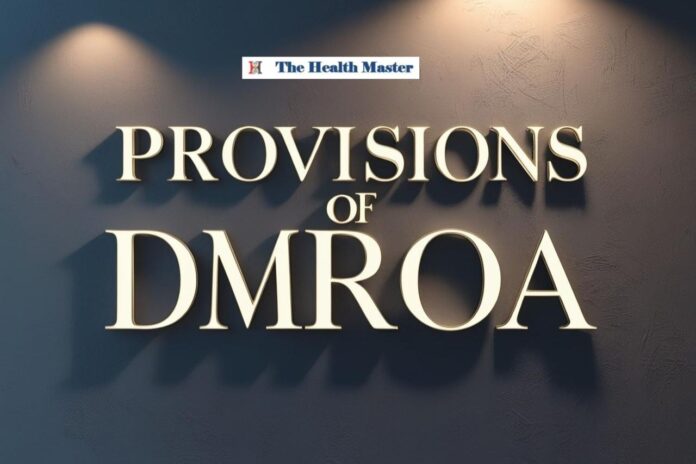- INSPECTION of a Sale & Distribution Premises - September 30, 2020
- Interplay Between the provisions of Cr.P.C & Drugs Act ? - September 1, 2020
- Safety of Cosmetics – Article - August 1, 2020
Last Updated on December 27, 2024 by The Health Master
DMROA
The Drugs and Magic Remedies (Objectionable Advertisements) Act 1954 (DMROA) defines advertisement as “any notice, circular, label, wrapper, or other document, and any announcement made orally or by any means of producing or transmitting light, sound or smoke.
The DMROA was challenged in “Hamdard Dawakhana v. Union of India”, on the ground that it is an infringement of the right to free speech under Article l9 (1) (a) and the right carry on trade and business under Article 19(1) (f) and (g).
Objection was also taken under Articles 14, 21 and 31.
By stating that the main object and purpose of the DMROA is to prevent people from self medicating with regard to serious diseases.
Also read other article of the author: Skills & Qualities necessary to be an Effective Regulator
The respondents justified the necessity of the DMROA and its rigorous enforcement. It was argued on behalf of the respondents that self medication in respect of diseases of serious nature mentioned in the Act and Rules has a deleterious effect on the health of the people.
Having thus found that some medicines have tendency to induce people to resort to self-medication by reason of elated advertisements.
It was thought necessary in the interest of public health to put a complete check.
Honorable Supreme Court considered the circumstances in which the legislation was enacted and the need to curb the mischief of self-medication.
It held that an advertisement was no doubt a form of speech but its true character is reflected by the object for the promotion of which it was employed.
Also read other article of the author: Analysis: Judgments on RTI Act, 2005
The Court opined that advertisement assumed the attributes and elements of the activity under Article 19(1).
But it held that “when it takes the form of the commercial advertisement which has an element of trade or commerce, it no longer falls within the concept of freedom of speech for the object is not propagation of ideas – social, political and economic or furtherance of literature or human thought”
On the question of freedom of trade and business the Court opined that it was not shown in the present case that under the guise of protecting public interest the Act arbitrarily interferes with private business or imposes unreasonable restrictions“
Another point raised by the petitioner was that the words ‘ or any other disease or condition which may be specified in rules made under the Act surrender unguided uncanalised legislative power to the executive to add any diseases in the Schedule.
The constitutionality of powers of search and seizure provided under section 8 of the DMROA was also challenged by the petitioners.
The Court accepted these two arguments of the petitioners and held “a portion of clause (d) of Section 3 and the whole of Section 8 as unconstitutional and since these are severable from the rest of the DMROA, it would remain unimpaired”.
Also read other article of the author: Inspection procedure by FDA regulatory
In TATA Press Lrd.v Mahanagar Telephone Nigam Ltd.
The Supreme Court has to deal with similar issue in which, the issue before the court was whether ‘commercial advertisement’ comes within the purview of the concept of “freedom of speech and expression” guaranteed under Article l9(l)(a) of the Constitution of India.
The Supreme Court speaking on the importance of the advertisements held the view that “general society also may have a strong interest in the free flow of commercial information”.
According to the Court the recipient of commercial speech may have deeper interest in the advertisement than the businessman who is behind the publication.
In the process Court referred to the importance of an advertisement giving information regarding life saving drug to the general public than to the advertiser who may be having purely a trade consideration” .
The Court also refused to distinguish between public interested commercial advertisements and the opposite kind.
Also read other article of the author: Right to Dignity at Work Place
It held that “advertising, however tasteless and excessive it sometimes may seem, is nonetheless dissemination of information as to who is producing and selling what product, for what reasons and at what price’
The Court, ultimately, held that “commercial speech” is a part of the freedom of speech and expression guaranteed under Article 19(1)(a) of the Constitution.
Accordingly, the Court speaking through Kuldip Sing.J. opined that “right to freedom of speech and expression guaranteed under Article 19 (1) (a) of the Constitution can only be restricted under Article 19(2).
The right cannot be denied by creating a monopoly in favour of the Government or any other authority”
Hence, by this judgement, the Supreme Court impliedly overruled Hamdard decision and recognised the right of advertisement as part of freedom of speech.
The change in the attitude of the Court might have been due to the winds of liberalisation blowing across the world and also India.
Disclaimer: This is the personal opinion of the author and anyone may have a different opinion.
Key Notes on Revised Schedule M: Compilation
Important short notes for Industry and Regulators
CDSCO Guidelines on Drug Recall
Quality Assurance Vs Quality Control in the Pharma Industry
Major FDA audit findings about Equipment and Instruments
Understanding GMP, cGMP, and WHO-GMP
Quality Assurance in the Pharmaceutical Industry
Duties and responsibilities of QA person in Pharma Industry
Difference: Disintegration and Dissolution test in pharma industry
Understanding DQ, IQ, PQ, and OQ in the Pharma Industry








